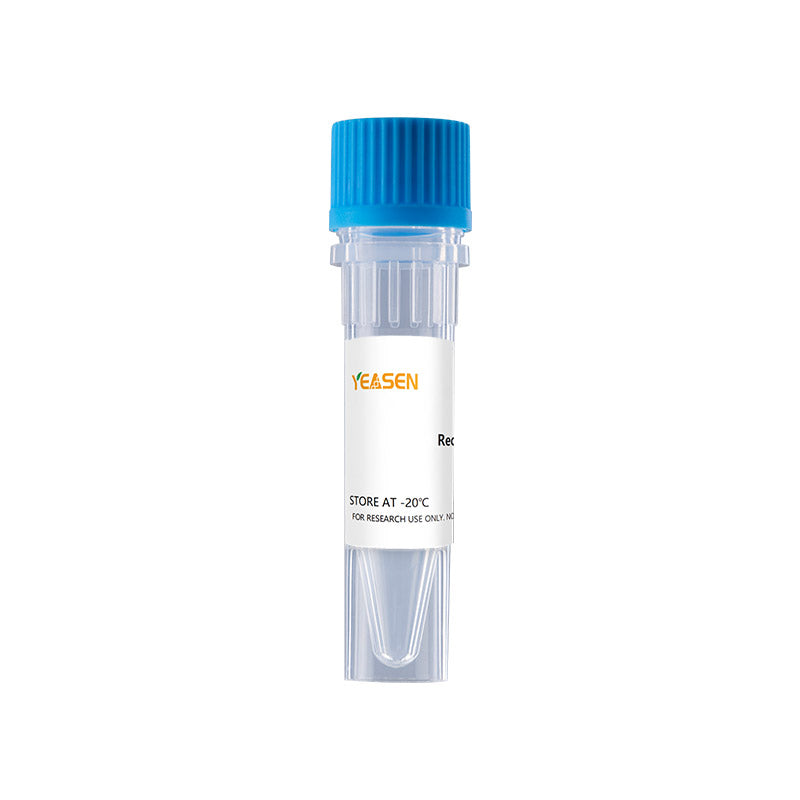Description
Mouse interleukin-36 beta [IL-36 beta ; previously IL-1F8, FIL-1 eta(eta) and IL-1H2] is a member of the IL-1 family of proteins that includes IL-1 beta, IL-1 alpha, IL-1ra, IL-18, IL-36Ra/IL-1F5, IL-36 alpha /IL-1F6, IL-37/IL-1F7, IL-36 gamma /IL-1F9 and IL-1F10. All family members show a 12 beta-stranded beta-trefoil configuration, share up to 50% amino acid (aa) sequence identity, and are believed to have arisen from a common ancestral gene. Although two alternatively spliced transcript variants for human IL-36 beta /IL-1F8 have been described, to date, only one mouse IL-36 beta /IL-1F8 isoform is known. Mouse IL-36 beta /IL-1F8 shares 61% and 74% aa identity with human IL-36 beta isoform 2 and rat IL-36 beta, respectively. IL-36 beta is agonistic, stimulating release of inflammatory mediators such as IL-6 and IL-8, and cytotoxic peptides such as beta-defensins 2 and 3 that aid in defense against microbial pathogens. The receptor for IL-36 proteins is IL-1 Rrp2, with IL-1 RAcP as a coreceptor. Antagonism of IL-36 proteins by IL-36Ra, which also binds IL-1 Rrp2, has been shown by some investigators. Skin keratinocytes express highest levels of IL-36 proteins and their receptors, followed by epithelia in the esophagus, trachea and bronchae. IL-36 beta expression is increased in psoriatic skin and may play a role in pathogenesis of psoriasis. IL-36 beta is also expressed in resting and activated monocytes and B cells, synovial fibroblasts, neurons and glia, and is detectable in plasma and body fluids. IL-36 beta, along with IL-36 alpha and IL-36 gamma, is up-regulated by IL-1 alpha and TNF- alpha in keratinocytes, and has been shown to activate NF- kappa B and MAPK signaling pathways in an IL-1 Rrp2-dependent manner. Full-length recombinant IL-36 proteins appear less active than their endogenous counterparts, but trimming of the N-termini enhances their activity.
Product Properties
|
Synonyms |
FIL1 eta, IL-1 eta, IL-1F8, IL-1H2 |
|
Accession |
Q9D6Z6 |
|
GeneID |
69677 |
|
Source |
E.coli-derived Mouse IL-36β, 153aa, Ser31-Lys183. |
|
Molecular Weight |
Approximately 17.4 kDa. |
|
AA Sequence |
SSQSPRNYRV HDSQQMVWVL TGNTLTAVPA SNNVKPVILS LIACRDTEFQ DVKKGNLVFL GIKNRNLCFC CVEMEGKPTL QLKEVDIMNL YKERKAQKAF LFYHGIEGST SVFQSVLYPG WFIATSSIER QTIILTHQRG KLVNTNFYIE SEK |
|
Tag |
None |
|
Physical Appearance |
Sterile Filtered White lyophilized (freeze-dried) powder. |
|
Purity |
> 97% by SDS-PAGE and HPLC analyses. |
|
Biological Activity |
The ED50 as determined by inducing IL-6 secretion in murine NIH/3T3 cells is less than 10 ng/mL, corresponding to a specific activity of > 1.0 × 105 IU/mg. Fully biologically active when compared to standard. |
|
Endotoxin |
< 1.0 EU per 1μg of the protein by the LAL method. |
|
Formulation |
Lyophilized from a 0.2 µm filtered concentrated solution in PBS, pH 7.4, 5% trehalose. |
|
Reconstitution |
We recommend that this vial be briefly centrifuged prior to opening to bring the contents to the bottom. Reconstitute in sterile distilled water or aqueous buffer containing 0.1% BSA to a concentration of 0.1-1.0 mg/mL. Stock solutions should be apportioned into working aliquots and stored at ≤ -20°C. Further dilutions should be made in appropriate buffered solutions. |
Shipping and Storage
The products are shipped with ice pack and can be stored at -20℃ to -80℃ for 1 year.
Recommend to aliquot the protein into smaller quantities when first used and avoid repeated freeze-thaw cycles.
Cautions
1. Avoid repeated freeze-thaw cycles.
2. For your safety and health, please wear lab coats and disposable gloves for operation.
3. For research use only!
Payment & Security
Your payment information is processed securely. We do not store credit card details nor have access to your credit card information.
Inquiry
You may also like
FAQ
The product is for research purposes only and is not intended for therapeutic or diagnostic use in humans or animals. Products and content are protected by patents, trademarks, and copyrights owned by Yeasen Biotechnology. Trademark symbols indicate the country of origin, not necessarily registration in all regions.
Certain applications may require additional third-party intellectual property rights.
Yeasen is dedicated to ethical science, believing our research should address critical questions while ensuring safety and ethical standards.

